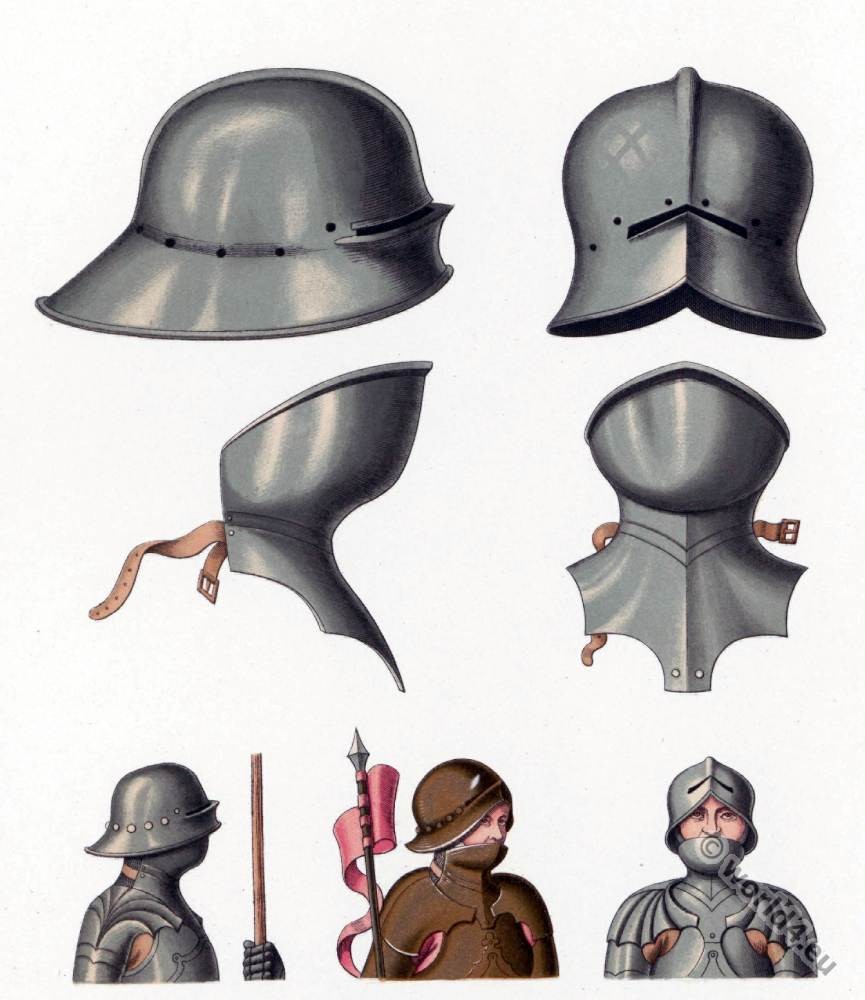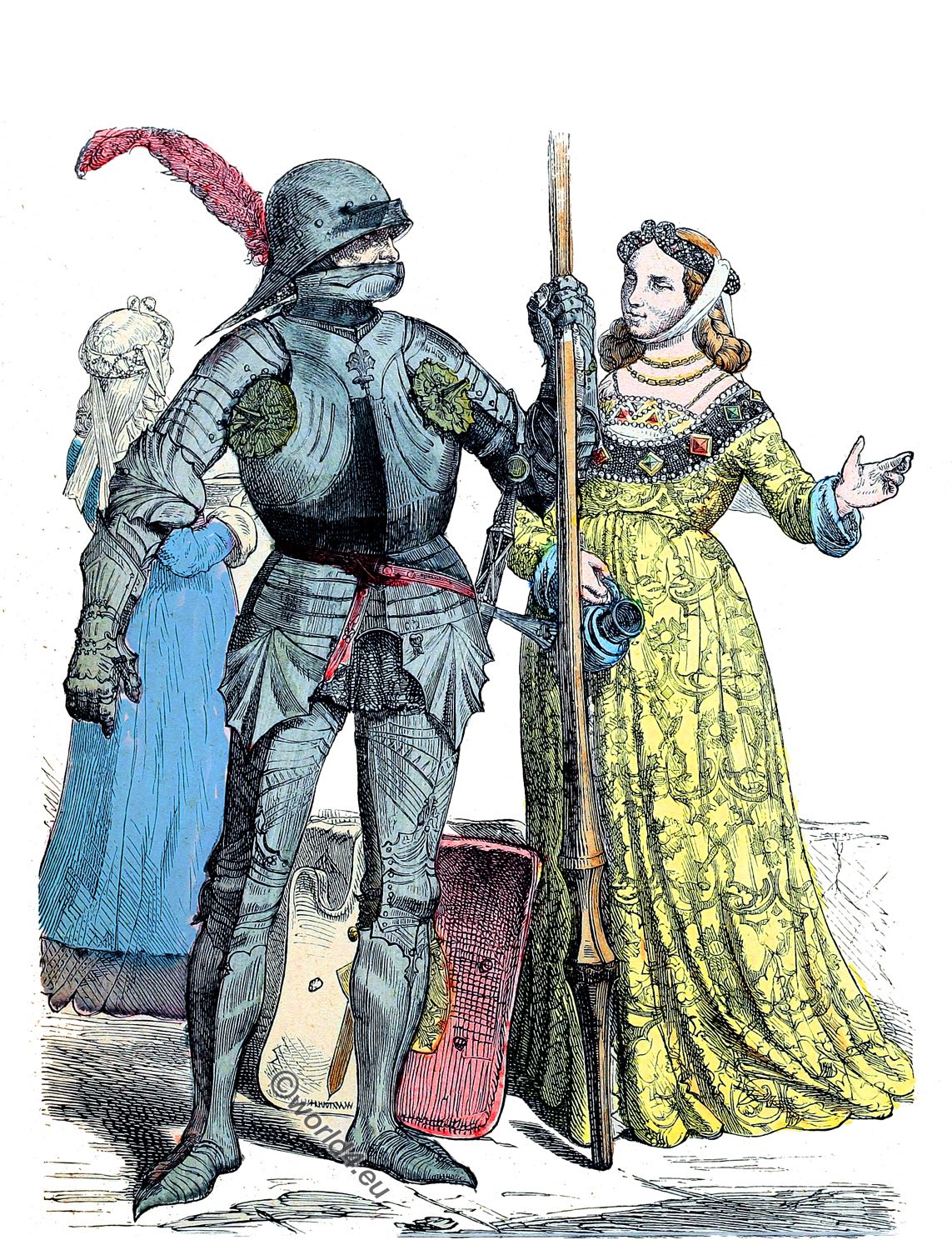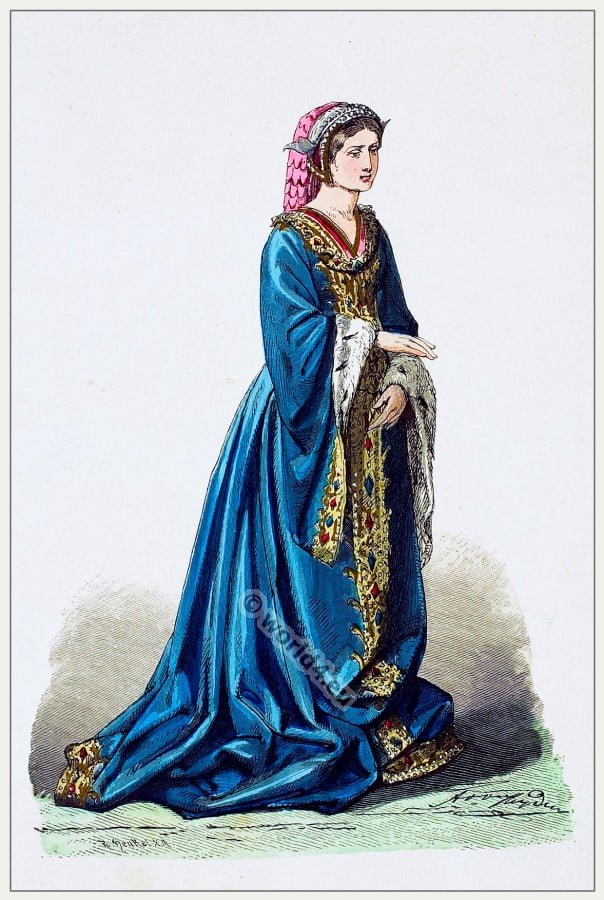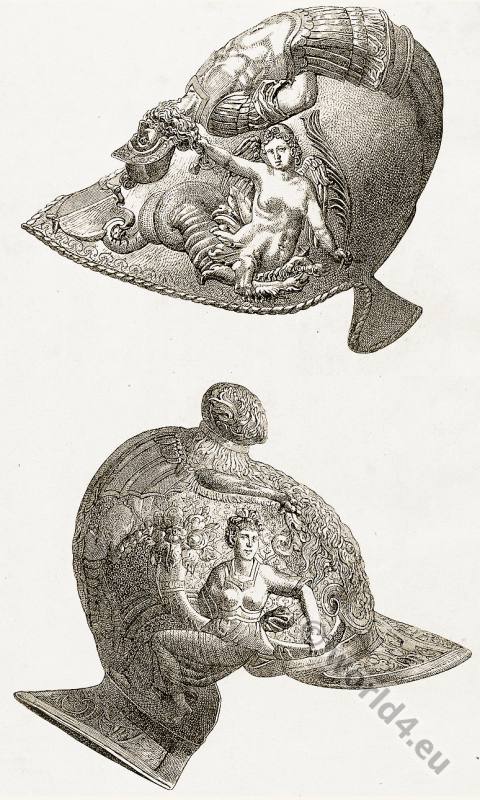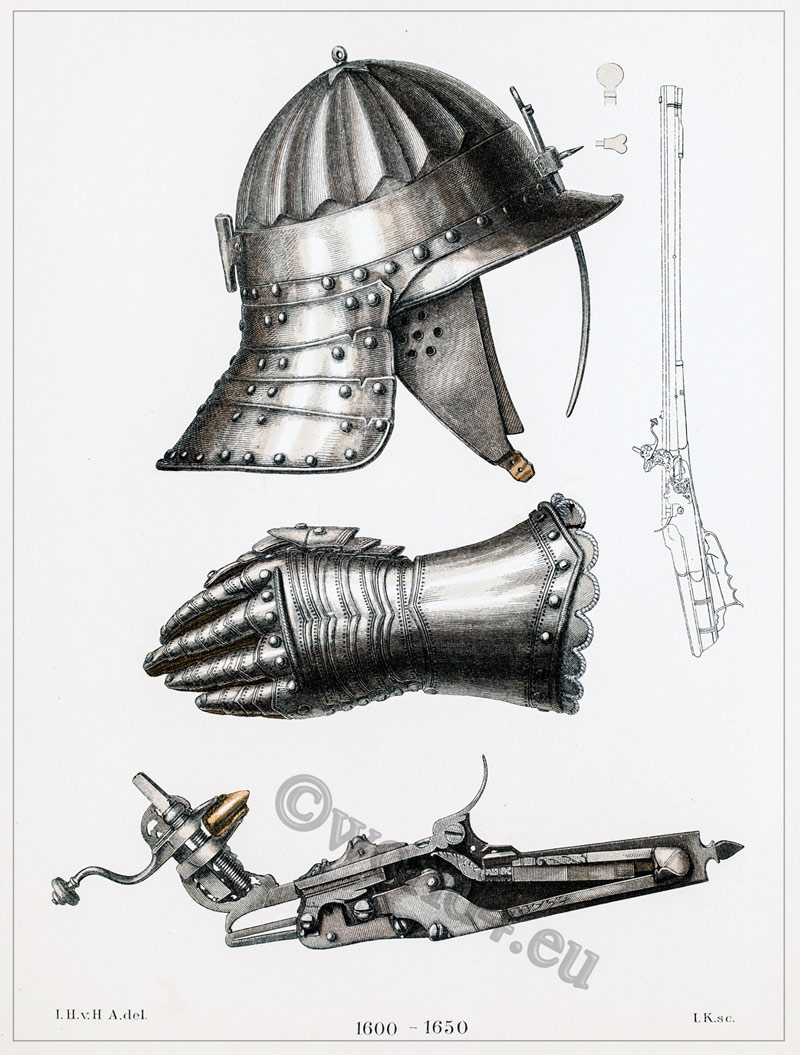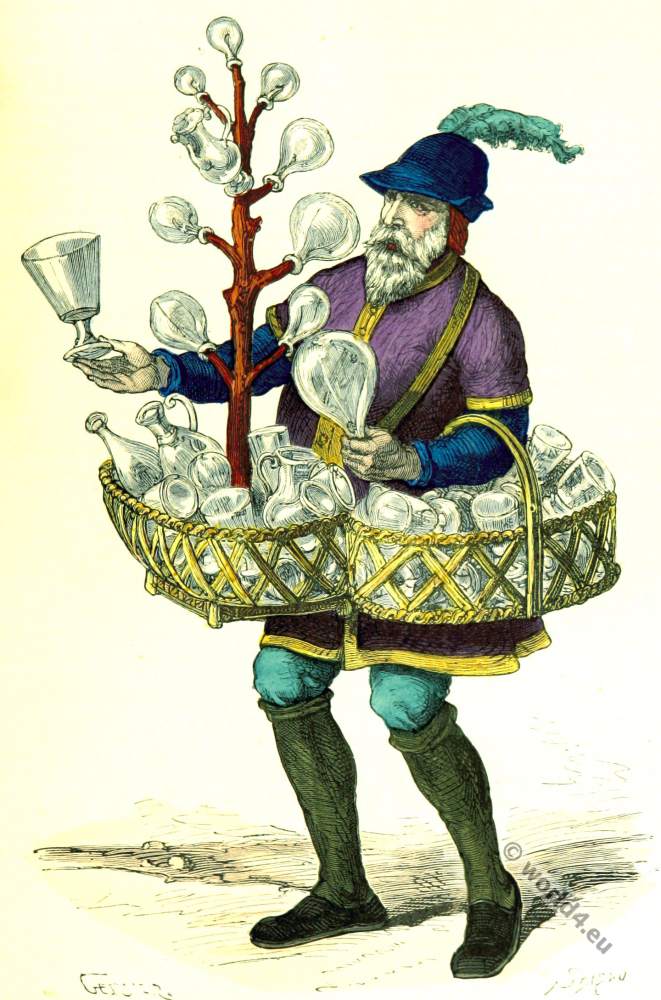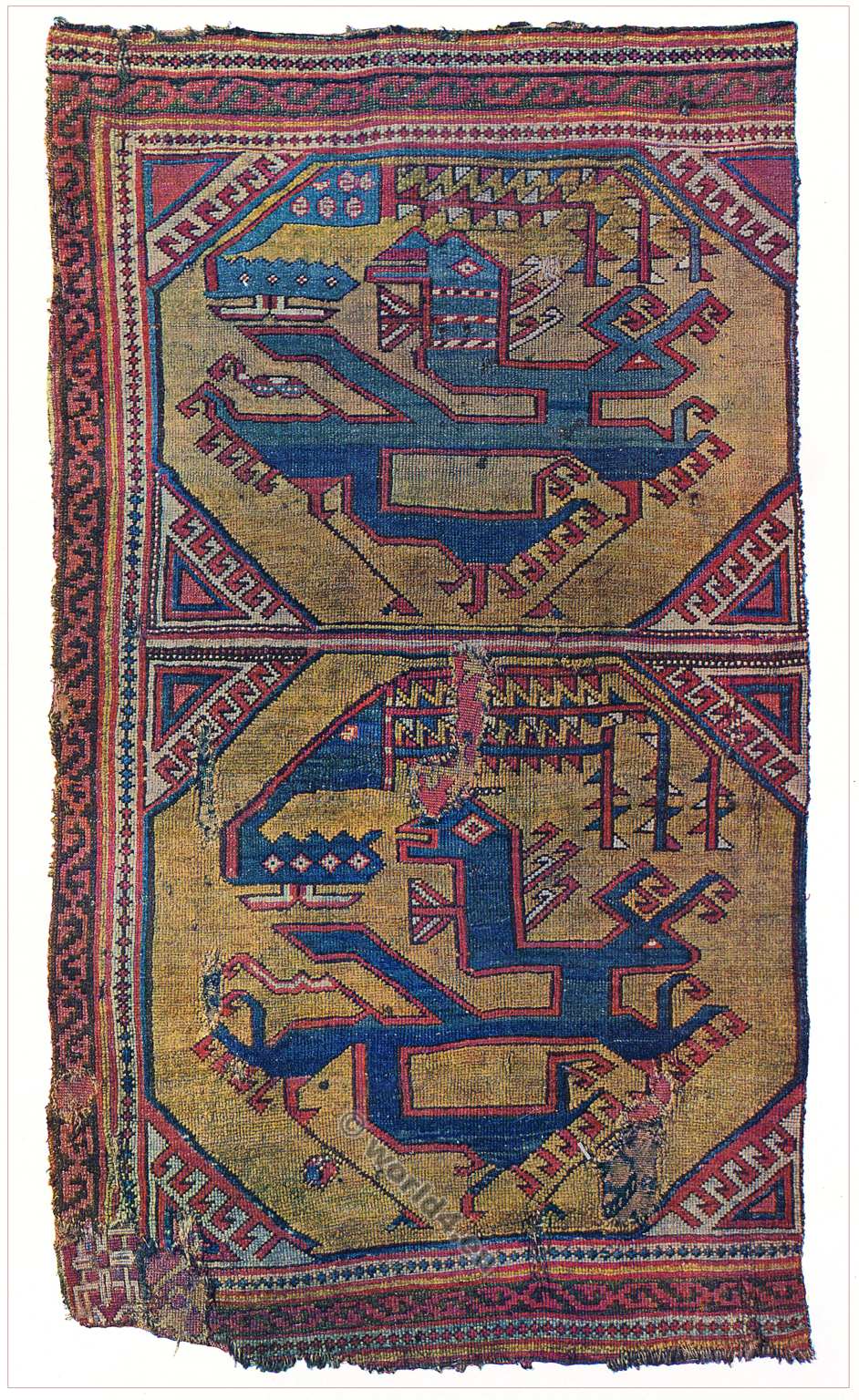The Schaller. 1460 – 1500.
Helmet and neck cover (beard hood) from the 15th century.
The helmet top left of the page and shown right from the front is kept in the Museum at Darmstadt, Germany. The neck or chin cover underneath left of the page, and right from front given, was in possession of the captain Müller to Bamberg. To illustrate how these weapon were worn parts, see the representations of three warriors, according to ancient drawings in the lower part of the image. This way to protect the head and neck, came around the mid-15th century in almost all European countries in use. This was then at the beginning of the 16th century, gradually displaced by the advent of the visor helmet, called Armet, which enveloped both chin and neck. The word beard hood comes in directories of weapons and hew equipment of the 16th century frequently.
This iron helmet, also called the Schaller or Salade, Celata is driven from a single piece and weighs five pounds. Characteristic of the Schaller is its streamlined shape. In particular, to Gothic armor – named after its late Gothic style elements – presented the Schaller as a good supplement. In front he provided with a slit for the eyes, as he was pulled down during the battle over the face. At carrying out of combat, they pushed him so far in height that the upper part of the face was free. Both kinds of wearing, show the three half-length figures in the lower part of the image.
The lower third of the face and the neck was not protected by Schaller, so especially the Knights on this helmet type carried a separate chin guard, which was attached to the breastplate, the so-called beard; this also can be seen here from the side and from the front. There are different types have developed. The German Schaller has a widely extended, movable neck (neck pushed) and either a half-visor or often just a slit.
The Burgundian Schaller, which was partly manufactured in Italy, has a comparatively shorter neck and almost always a full visor. An English type has a pointed cap expelled. The Schaller without visor were often worn by shooters. A Schaller offered very good protection, but limited in connection with a beard the breathing. Many helmet wearer therefore waived on the chin guard. For a number of narrations indicate that this carelessness could lead to a hit in the face and thus the death of the helmet wearer.
Source: Costumes, art and utensils from the early Middle Ages until the end of the eighteenth century, after simultaneous originals of Dr. J. H. Hefner-Alteneck. Publisher of Heinrich Keller. Frankfurt a. M. 1879-1889.
Related
Discover more from World4 Costume Culture History
Subscribe to get the latest posts sent to your email.

